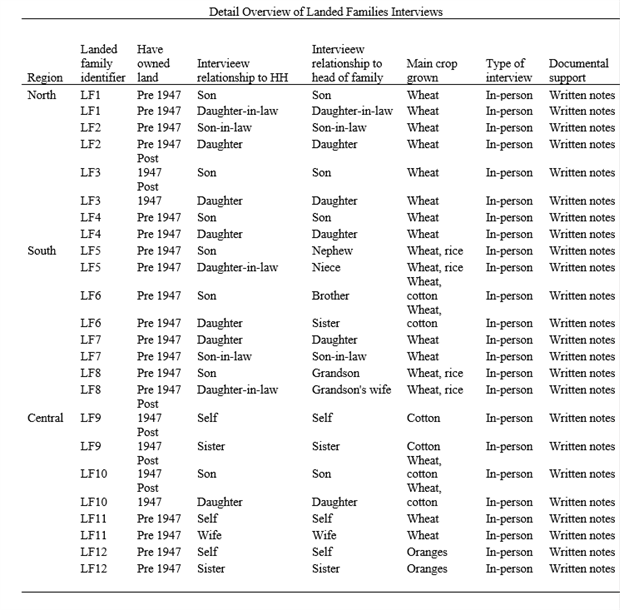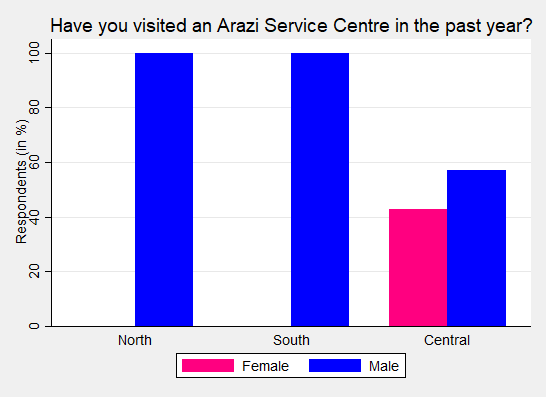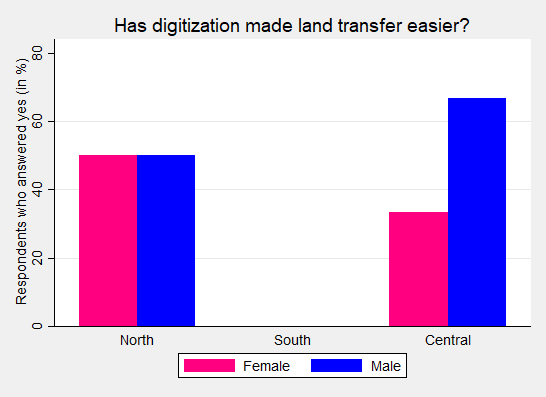Digital Land Records as a Women Empowerment Policy: Evidence from the Punjab
The Friday Economist is a collaborative blog series between LUMS MHRC and the CNM Department of Economics at LUMS
There is evidence to suggest that the digitization of land records benefits marginalized land-owning groups, such as women. This can happen in two ways: either by improving access to records, or by reducing the chances of a male relative colluding with revenue officials to introduce unwarranted changes into existing land records (Agarwal et. al, 2021; Getie et. al., 2023; Holden & Tilahun, 2020). In 2011, the Government of the Punjab, with the support of the World Bank, initiated a large-scale project to digitize land records of rural, agricultural land in the province. Upon completion of the digitization process in 2015, Arazi Service Centers (ASC) were set up in each tehsil of the province to allow landowners to view, update and obtain copies of their digitized land records. Under the new system, heirs must submit a Family Registration Certificate generated by NADRA to confirm the number of heirs, and all heirs must come to the ASC for biometric verification for an inheritance mutation to take place. The ASCs offer women-only facilities as well, such as separate waiting areas for women clients and officers. The service centers also provide mobile vans that offer at-home services to women heirs who have mobility constraints.
These measures help make it harder for male relatives to deliberately exclude women from the deceased’s heir list or from the inheritance mutation process by citing restrictions around purdah (observance of veil) or limited mobility (Nelson, 2011). Prior to digitization, anecdotal evidence from South Punjab suggests that male relatives presented male friends shrouded in a large cloth (burqa/full-body veil) as their sisters to deceive revenue officials into thinking the ‘sisters’ had willingly relinquished their inheritance share to their brothers (Martin, 2015). Revenue officials interviewed in Punjab said they are confident that exclusion or false representation of women family members has become negligible, if not impossible, since the digitization process.
But what is the impact of this digitization of land records on actual women from landed families? To answer this question, I used an unconventional approach. Instead of gathering survey data at scale – which is often assumed when questions of ‘impact’ are posed - I relied on a qualitative methodology for deeper insight into the experiences and perspectives of members of landowning families. To this end, I interviewed one man and one woman from each of 12 historically landed families across the Punjab (4 families from each region of North, Central and South Punjab) in 2021, for a total of 24 interviews. All respondents interviewed were in the range of 25-45 years of age, married with, on average, two children each. The amount of land owned was not specifically attributable to respondents’ immediate families alone, but they were all historically landowners (owned land from pre-1947) of large family estates (see Figure 1).

Figure 1: Detailed overview of interview participants
Who visits an Arazi Service Center?
Out of 12 male participants, 9 reported having used the ASC for any reason in the last year, whereas only 3 out of 12 female participants mentioned having used the ARC in the same time period of a calendar year. Figure 2 (below) shows the percentage of male and female members of the interviewed landowning families across the three regions of Punjab that visited an ASC in the past year. Overall, men were three times more likely to have visited an Arazi Service Centre compared to women. In North Punjab, only one of the men interviewed had visited the Arazi Service Centre, whereas all the men in Central and South Punjab had visited a centre. In contrast, only 3 out of the 4 women interviewed in Central Punjab had visited the Arazi Service Centre, but none of the women from the other two regions had done so. My interview data revealed this to be a relatively consistent pattern over the past year and the years before.

Figure 2: Visits (percentage) to Arazi Service Centers in past year, by gender and region
Visits are need-based: respondents from North Punjab have had the least experience with ASCs, potentially because none had experienced an inheritance mutation case since the completion of the digitization process. Half of the families (2/4) interviewed from this region had moved away from agricultural cultivation as the main source of revenue for the family, and were living elsewhere so did not usually need the services of the ASC. These families now hold a limited amount of land, primarily in the father’s name, and the patriarch takes care of matters related to the land. Disputes over land (which were reportedly few), are immediately settled within the family and do not involve taking matters to court.
In Central Punjab, respondents found that the service centre made things easier for absentee landlords, who were able to handle mutation cases easily by checking computerized ownership of land parcels from afar. This saved them from a dependency on verbal assurances (such as of a patwari (land revenue clerk) or other local revenue officials, who could be bought off by other family members). They all testified that digitizing land records has made it easier to settle land dispute cases within a (joint) household. One respondent shared how he had uncovered an informal collusion between his paternal uncle and local revenue officials to use his sister’s land by using an ASC to get the official land records. Faced with the evidence, the uncle surrendered his sister’s part of land holdings, leading to a successful outcome without going to court.
In contrast, visits may not necessarily imply greater knowledge of, or involvement in, land disputes. Even though all men interviewed in South Punjab had visited the ASC, they clarified that their local revenue official (patwari) manages the paperwork for them, and organizes their visits to the local digitized service centre when their physical presence is required.
Do ASCs translate into better services?
When questioned if the digitized service centres had increased the ease of land transfers in particular, the only resoundingly optimistic response was from the members of North Punjab, who perceived digital land record availability to be an important indication of systemic progress in the country (in comparison to the previous manual land record system). But because my participants from North Punjab also indicated a very low level of interaction with an ASC (only 1 of 4 family representatives interviewed had done so), their perception around improved data systems through digitization should be read with caution.
The women I interviewed from South Punjab did not have any experience in land transfer. Most of the transfers made in their families were either at the time of death of their fathers-in-law (which does not require approval from daughters-in laws) or bequests made by their husbands/brothers (which does not involve the participation of other members of the family). None of the South Punjab men, however, thought that this system had improved matters for them. Instead, it appeared to have added additional steps that they needed to ‘compensate’ their local revenue official for handling. The contrast in the perception between North and South Punjab could stem from the fact that the main professional engagement of South Punjab families in my sample is in the agriculture sector, whereas families from other regions are involved in occupations other than agriculture hence do not spend most of their time at their estates.
The families from Central Punjab had mixed opinions about the new digitized system. Echoing the takeaway from the South Punjab sub-sample, in Central Punjab families, too, those based outside of their villages (in an urban/city space) felt it had made it very easy for them to handle their land transfers. But those living near their estates felt that digitization had not greatly improved the manual land transfer process.

Figure 3: Perceptions about digital systems for ease of land transfer, by gender and region
Parting thought
My interview results reveal that the digitized land record system is not being fully utilized by women landowners in the Pakistan context, despite a significant effort made by the government to make Arazi Service Centres more welcoming for them. One reason is that there is low awareness amongst women landholders of the different facilities these service centres offer, such as separate waiting areas and mobile van facilities. Secondly, women in my sample understood the ASCs to be a governance space, where the inheritance mutation process could be initiated and transfer of land assisted, but not as sites of information, from where they could generate information about their (or their family members’) land titles.
Awareness campaigns specifically targeting women landholders about services and facilities available to them could be an important first step to attracting more women towards these service delivery points. Digitization of land records has the capacity to help women landholders engage with the public sphere by providing them the facility of a safe space through which they gain information of their land rights as well as carry out their land-related transactions. Simultaneously, parallel information campaigns targeting men landholders may also be of benefit, given how deeply men mediate the social space of family land management. Until the dependency of women on male relatives for decision-making is structurally altered, women landowners (of whichever size) may continue to remain unsure of whether, and how, to benefit from technological innovations in Pakistan’s land management schemes.
Hana Zahir is a Teaching Fellow at Department of Economics, LUMS
Mahbub ul Haq Research Centre at LUMS
Postal Address
LUMS
Sector U, DHA
Lahore Cantt, 54792, Pakistan
Office Hours
Mon. to Fri., 8:30 a.m. to 5:00 p.m.









